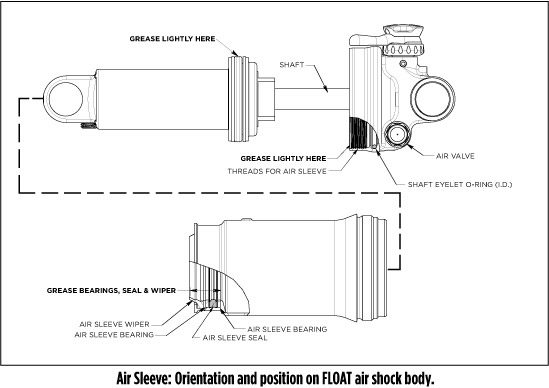
HOW IMPORTANT IS SUSPENSION MAINTENANCE, ANYWAY?
WHAT PROBLEMS ARE WE TALKING ABOUT?
A typical issue is a blown fork seal, which will send oil flowing down the outside of your fork leg(s). If it’s the non-drive side seal, that oil will usually contaminate your front brake, which is dangerous since you’ll experience an almost total loss of power in that brake. It will cost you new brake pads, possibly a new rotor, and the labor required to get things back to normal. Meanwhile, your fork is now running dry of oil, over time wearing out the expensive coating on your stanchions. Letting this situation continue will eventually cost you anywhere from a couple hundred dollars in parts and labor to possibly $1000 for a new fork. Meanwhile, you could have prevented all of this with a simple lower leg service for $65.
Similarly, you might also suffer breakdown of the shock’s air can seal. This will cause all the air to leave your shock in the middle of a ride, which will force you to walk whatever miles remain. Another issue would be damper malfunction, making the shock feel harsh and bouncy as damping functions are lost. Racers in particular should pay close attention to suspension maintenance, since no one wants this to happen in the middle of a race they paid hard-earned money to enter.

RIDING HOURS VS. SUSPENSION HOURS
WHAT ARE THESE SERVICES, EXACTLY?
Fork lower leg service: The seals, which play a vital role in keeping oil in and dirt out, get replaced. The oil that lubricates the bushings is changed and all surfaces are cleaned, removing broken-down oil as well as particulates that could damage the nice, slippery surface of your stanchions.
Air spring service; damper service: these services maintain the effectiveness of the parts that make suspension feel so good: the spring itself and the damper that controls its movement. Depending on the damper you have, that will include removal of old oil and particulates, and some forks require bleeding a bladder-based system.
Shock air can service and damper service: Same concepts as fork service, but also includes replacing the many o-rings that create air- and oil-tight seals within the shock. Some services may also involve recharging the nitrogen chamber that helps to control the damper.

